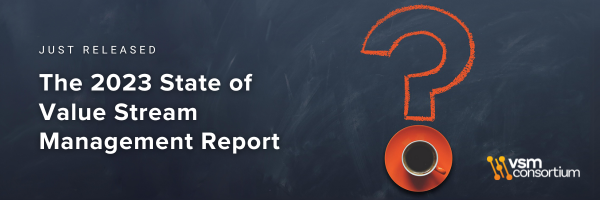Writing this year’s report with Eveline Oehrlich was a surprisingly emotional experience. I found myself struggling with one of my most distinct character traits—my impatience. It’s a standing joke with those humans with whom I have close relationships that I have almost zero reserves of patience—a personality facet that I have been known to defend on the basis that it’s what helps me get sh*t done.
But while we were crunching the data and filtering for insights, my brain was kinda desperate to find more trends. Eveline, as ever, is fantastic to work with and, when I shared how I was feeling with her, pointed out that this is only the second year of the report—the first where we would find any trends at all—and while some of the data dismayed me, there were also plenty of green shoots pointing towards blooming roses in the future.
Before I share more about the good, the bad, and the ugly, let me explain why my emotions were running so high at work and this particular research. My path into Value Stream Management has been via DevOps—one of the things I find most joyful about working in the Value Stream Management Consortium community is how many different paths people walk down to join us here—agile at scale, lean, manufacturing—it’s widened my network and my eyes enormously. But it was my frustrations with DevOps adoption that led to my Value Stream Management epiphany:
- How organizations find it so hard to find the time to save time—that they are sprinting just to stay still. My prime example of this was how frequently teams I worked with on value stream mapping exercises never found the time to revisit them despite leaving the room with a future state map they were seriously pumped about
- The amount of time I spent with teams in metrics workshops, trying to choose the metrics that were going to help them move the needle, find that time, break the toxic cycles they were in, elevate customer experience—that seemingly led to naught or one poor soul slaving over dashboards that nobody then really looked at
- That DevOps adoption so frequently falters and stalls—as Puppet showed in their State of DevOps Report 2021, so many organizations have become stuck on their journey
My epiphany happened in the summer of 2019 and I realized that Value Stream Management was what I’d been looking for—it was going to unlock the promise of DevOps. Value Stream Management has been around for a long time, but it’s only very recently that it’s had this new renaissance. This resurgence is all to do with digital—and all to do with the twelve years the industry has spent investing into DevOps practices and, very importantly, toolchains. Because DevOps toolchains are now fairly widespread they enable us to:
- Make work REALLY visible so we can target unplanned work and waste and justify pausing change now to make improvements that pay dividends in terms of increased capacity for innovation later—we can see where to find the time to save time—and what impact it’s had
- Effectively automate the value stream map so there’s no need to try to coordinate two to four-day value stream mapping events requiring twelve or more highly paid, hyper-busy people—real-time data can be made available for continuous inspection
- Make the metrics obvious, automating insights for teams so they don’t have to spend hours trying to connect things together, build dashboards, stare until they’re cross-eyed to try and figure out what’s going on
But a DevOps toolchain can’t do it on its own—not without a lot of heavy lifting from the development and/or platform teams. There is good news in that the vendor landscape for Value Stream Management solutions is burgeoning—and a little bit of bad. As Forrester’s Chris Condo put it in his blog post, The State of VSM: Five Things We Like, alongside the launch of Forrester’s latest VSM research report, The Value Stream Management Landscape, Q3 2022:
“More vendors means more competition and more innovation, which is good for users, but it also means more noise.”
The analysts tend to focus on the vendor landscape, which is super-useful for buyers no doubt, but there’s a little more going on when organizations adopt Value Stream Management ways of working. As we describe here in The Value Stream Management Implementation Roadmap, there are a few steps on this journey—in fact, we arranged our report on the State of Value Stream Management this year according to these steps. It’s been shown it’s possible to implement tooling ahead of mapping, even organizing, around value streams but many organizations still want to get these foundations in place—and our research shows that mapping is still the most common entry point into VSM. It’s simply much better known right now that the wider set of management practices.
So, onto the good, the bad, and the downright ugly discoveries in this year’s report:
The Good
- More businesses are using value streams as an organizational design construct
- Leaders are getting better at measuring the organizational outcomes that result from VSM adoption
- More people are using Value Stream Management platforms to support their value stream management practices—and they’re not trying to do this by themselves
- Tools proliferation is a problem—which sounds bad, but it’s not because this is the solution that Value Stream Management platforms offer—making sense of multiple, heterogeneous toolchains across complex organizations
The Bad
- It’s possible that less people are moving from project to product—or perhaps more accurately—more people are moving to the halfway house of agile projects as they transition
- Teams are still using value stream mapping for its experience-based benefits—not the empirical insights that will really accelerate their adoption of new ways of working
- Leaders aren’t leading or buying into Value Stream Management adoption yet—and change works best in combination of top-down and bottom-up effort
The Ugly
- The separation between the technology parts of the organization and the rest of “the business” persists—but it’s ok, this is exactly what Value Stream Management solves by connecting all the parts of the value stream together, end-to-end
- People do have change fatigue and apathy—it’s a challenge to explain why Value Stream Management is different
In summary, as we put it in our report—Value Stream Management is crossing the chasm. We’ll be exploring this in detail at Flowtopia on October 17 in Las Vegas, our inaugural, flagship, in-person event with speakers living through VSM adoption journeys right now.
Those green shoots are showing us how the roses are blooming, my impatience is not sated—I can’t wait to see what news the 2023 report brings. If you want to participate in the making of the 2023 report and join the VSMC community, become a member below!

Helen Beal
Helen is the CEO and chair of the Value Stream Management Consortium and co-chair of the OASIS Value Stream Management Interoperability Technical Committee. She is a DevOps and Ways of Working coach, chief ambassador at DevOps Institute, and ambassador for the Continuous Delivery Foundation. She also provides strategic advisory services to DevOps industry leaders. Helen hosts the Day-to-Day DevOps webinar series for BrightTalk, speaks regularly on DevOps and value stream-related topics, is a DevOps editor for InfoQ, and also writes for a number of other online platforms. She is a co-author of the book about DevOps and governance, Investments Unlimited, published by IT Revolution. She regularly appears in TechBeacon’s DevOps Top100 lists and was recognized as the Top DevOps Evangelist 2020 in the DevOps Dozen awards and was a finalist for Computing DevOps Excellence Awards’ DevOps Professional of the Year 2021. She serves on advisory and judging boards for many initiatives including Developer Week, DevOps World, JAX DevOps, and InterOp.









Comments 0